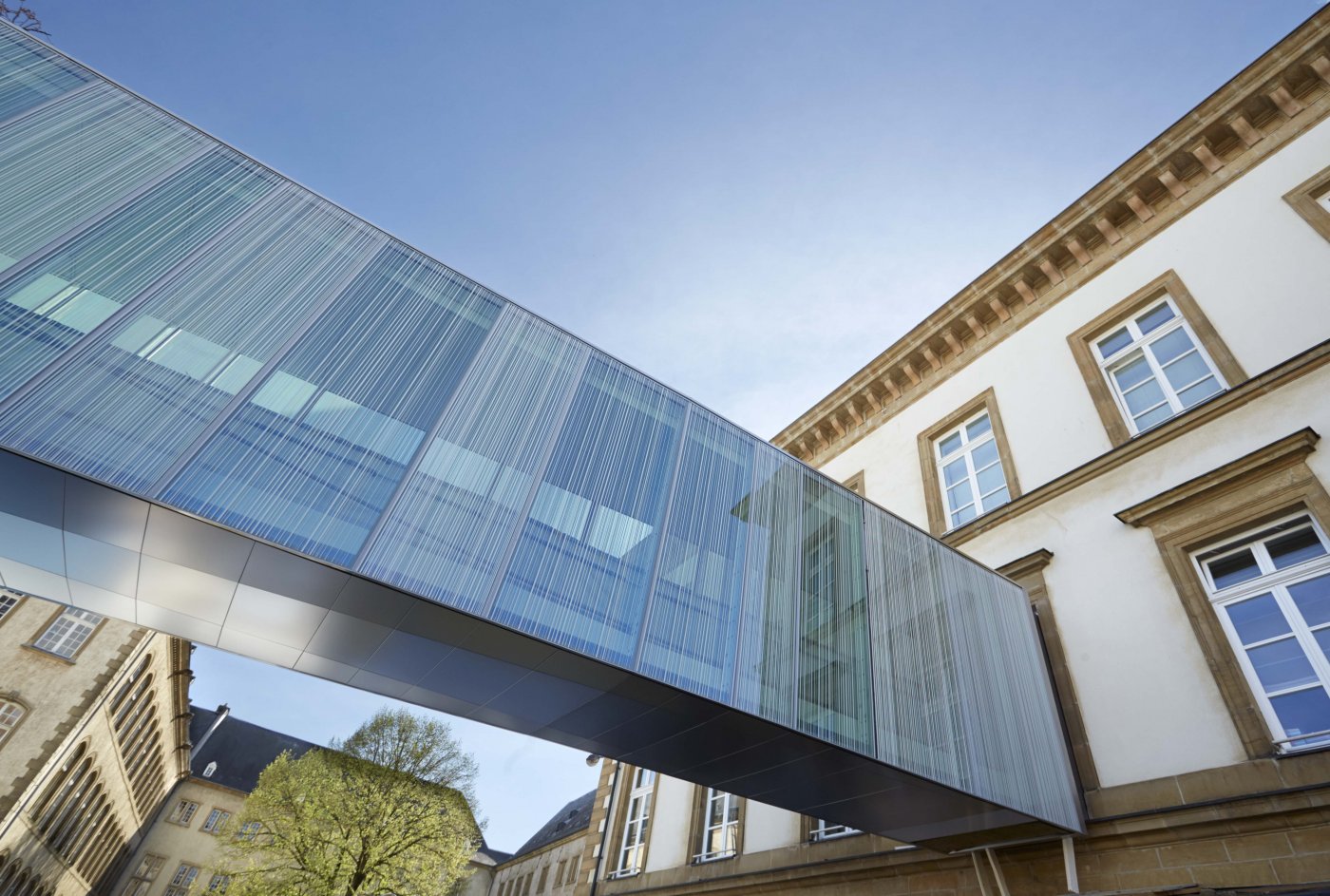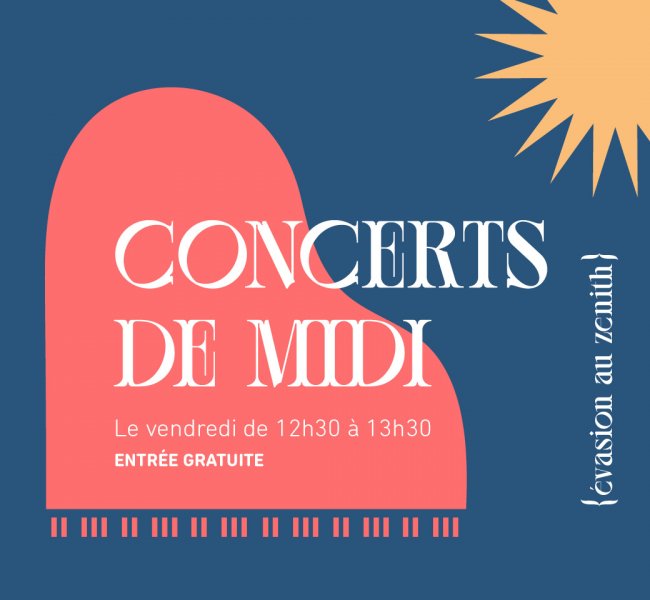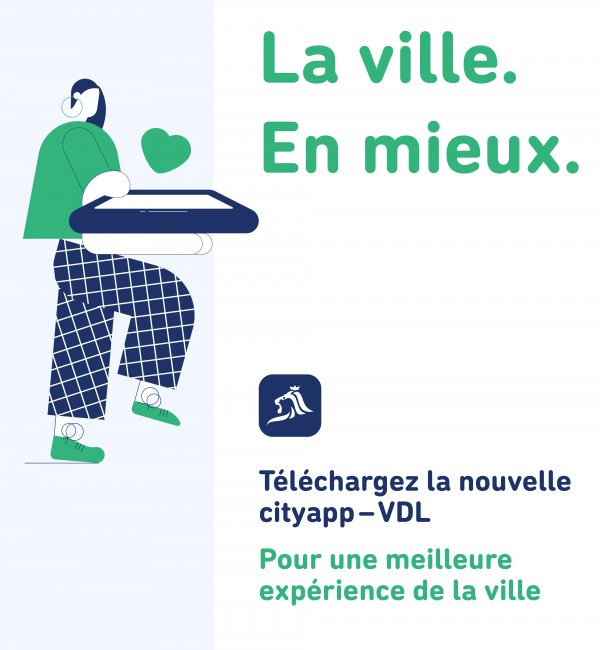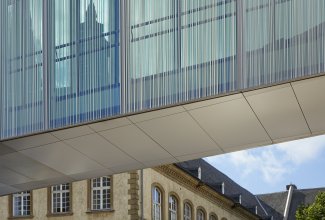Summary record
Video
Violations of the general regulations on public order and safety (Règlement général de police
QUESTION BY CLAUDINE KONSBRUCK
The City's general regulations on public order and safety (Règlement général de police), which date back to 26 March 2001, lists a series of more or less serious violations that are subject to fines.
The Regulations were last amended on 23 November 2015, and saw the introduction of a new article – Article 51 — on begging, which provides that:
All forms of organised begging, or begging in groups, is prohibited. Minors under 18 years of age are prohibited from begging, as are adults accompanied by minors under 18 years of age, whether such minors are begging or not.
- The general regulations on public order and safety (Règlement général de police) contain several outdated and obsolete formulations, and the College of Aldermen's intention to revise the regulations should be commended.
Shouldn't certain forms of incivility also be prohibited? (for example, unauthorised dumping of rubbish or dumping of rubbish next to public waste containers; discarding rubbish/cigarette butts on public roads, graffiti, etc.)
What schedule is planned for the revision of the police regulations?
- Begging is still omnipresent in the streets of the city.
Can the College of Aldermen provide information on the number of tickets issued for violations of Article 51 in 2016-2017?
Some beggars keep small dogs. There was recently an incident involving dogs.
Are regular checks carried out on animals? Have there been cases of non-compliance with veterinary requirements?
RESPONSE BY LYDIE POLFER
The Mayor responded that the police have the authority to issue tickets, but that the information it provides is unfortunately inadequate.
The police asserted that article 51 of the general regulations on public order and safety is not extrapolated in the police statistics and violations of this article belong to an assortment of violations provided for in said regulation, therefore the police cannot provide specific data on the number of tickets for violations of article 51. The police further specified that beggar's dogs are checked by police officers and that in general the dogs have all been vaccinated, or possess the necessary documents, as required by law.
When the law concerning the new powers and functions of municipal officers is approved, the Municipal Council will be asked to vote on a broader revision of the general regulations on public order and safety.
Pedestrian safety in the 30 km/hour zones
QUESTION BY HÉLOISE BOCK
In view of recent accidents involving pedestrians in the city, I would like to ask a few questions about possible additional measures for pedestrian safety. These measures could be added to provisions already in place, such as improved lighting at certain pedestrian crossings and signage at schools.
First, I would like to know whether the pedestrian crossings that were removed in some parts of the city when 30 km/hour zones were created could be repainted on the roads, in order to provide adequate safety for the pedestrians. I would also appreciate it if you could tell me whether measures could be taken in streets with 30 km/hour zones to alert and slow down the many drivers who obviously do not comply with the speed limit.
At a meeting with a representative of the City's Service Circulation (Traffic Department) it was explained to the residents of the Gare district that there was theoretically (according to a concept developed at the national level) no need to maintain pedestrian crossings in the 30 km/hour zones given that such 30 km/hour zones were introduced for the purpose of creating a "shared space", and that pedestrians could thus cross the streets outside of the pedestrian crossings. The idea of removing pedestrian crossings – in particular in streets in which no special adaptations were made – is not fundamentally logical in terms of pedestrian safety. For example, how does one explain to a five-year-old child, who does not know the traffic code or understand the concept of 30 km/hour zones, that they can cross a street outside of the designated pedestrian crossings in a 30 km/hour zone and not in another street in a 50 km/hour or more zone? Is there not an adverse effect created by allowing children to develop irresponsible habits? It must be recognised that most drivers, and even professionals, do not seem to know the rules applicable in the 30 km/hour zones and therefore do not let pedestrians cross. The question is thus whether it is possible to repaint all the pedestrian crossings that have been removed, to stop removing pedestrian crossings in the 30 km/hour zones, and to determine the locations where pedestrian crossings could possibly be added in the 30 km/hour zones.
In addition to the above-mentioned measure, I would like to propose two other measures for improving pedestrian safety:
The first measure is to systematically adapt all streets with 30 km/hour zones. This adaptation, which is implemented in other cities, consists in laying out the streets in a "zigzag" pattern so as to avoid straight lines. Such an adaptation could also be accomplished fairly quickly in the existing streets by screwing poles in the ground, alternating on the left and right sides of the street, in the vicinity of the tree boxes. Doing so would create a "zigzag" layout, which would narrow the streets. Another possibility, that would no doubt be more visually appealing, would be to paint angled parking places for cars, alternating on the left and right side of each street, instead of rows of parking places on each side. Another measure that could be added to this "zigzag" layout consists in elevating pedestrian crossings at the entrances of residential streets: pedestrians would be more visible and drivers would be clearly alerted to the need to slow down to allow pedestrians to cross in residential zones, as opposed to main traffic arteries in which vehicular traffic must remain as fluid as possible.
Finally, a campaign to raise awareness among drivers – and among professional drivers in particular – of 30 km/ hour zones, would also be useful. Such a campaign would be a logical complement to the current campaign that focuses only on pedestrians. Signs placed at all city entrances could remind careless drivers of the fact that they are entering an urban space with pedestrians. I hope that the above suggestions are useful and there is favourable interest in the idea of properly implementing real 30 km/hour zones to improve the coexistence of vehicles and pedestrians.
RESPONSE BY PATRICK GOLDSCHMIDT
Alderman Goldschmidt replied that the City generally follows the principles laid down by the National Traffic Committee (Commission de la Circulation de l’Etat) that recommend reducing to a minimum the number of pedestrian crossings within the 30 km/hour zones, and that the City reserves the right to create pedestrian crossings in certain locations.
Even when a crossing exists, pedestrians are advised to look both ways before crossing the road.
It has been observed that drivers seek the most convenient routes to get to their destinations, and it has not been proven that pedestrian crossings increase compliance with speed limits. The Service Circulation conducts regular surveys to count the number of cars in transit and their speed, and this department could be asked to conduct counts in certain problem streets with a view to installing traffic signs if necessary.
In cooperation with the local interest groups (syndicats d’intérêts locaux) of the districts, an analysis could determine the best locations for pedestrian crossings.
At the entrances to 30 km/hour zones, road width is limited to 5.5 meters, and in the districts where the streets are narrow, such as the Gare district, additional infrastructure measures have not been envisioned.
With regard to elevated pedestrian crossings, local residents often complain of the noise caused by each passing vehicle. To put in place "zigzag" lanes, roads must be wide enough to allow such lanes. In addition, many cars park in these streets, which makes implementation of zigzag lanes all the more problematic.
The City takes part in a number of awareness campaigns conducted by Sécurité Routière (roadway safety association), such as the "Réfléchissez-gitt sichtbar" campaign in 2017, and the City departments conduct their own campaigns, such as "Share the city", during Mobility Week. Each year, a campaign is also conducted to encourage safe driving in residential districts.
Technical problems with the Pfaffenthal lift
QUESTION BY TOM KRIEPS
The Pfaffenthal lift, which took a certain amount of time to complete and considerably exceeded budgeted costs, has been quite successful, which I think is rightly merited.
Unfortunately, it seems to be plagued by a number of technical problems that shut it down on a regular basis, inconveniencing cyclists and other residents of Pfaffenthal.
It is currently out of order until 9 April, which also happens to be the start of the tourist season.
Can you tell me what the reasons for these repeated breakdowns are, and how we can find ways to improve the system?
Is the project design defective?
RESPONSE BY PATRICK GOLDSCHMIDT
Alderman Goldschmidt replied that the Pfaffenthal lift is maintained regularly, but there have indeed been a few breakdowns, including a major breakdown over Easter week-end when a moving part failed.
The lift, which travelled the equivalent of approximately 50,000 km in two years, was within budget.
Whenever monthly lift maintenance is scheduled, the public is informed by means of an app, and signs are put up to ensure greater visibility.
The lift, with its unique design, has so far been a great success. The glass used has different layers, one of which cracked recently. However there was never any safety risk for users, and the lift remained in service. During the next maintenance operation, temporary glass panels will be installed pending the final replacement of the damaged glass.
With regard to Wi-Fi, it basically connects to the system when a user pushes the button. This Wifi is secure and cannot be activated by an external user.
Citizen involvement in the planning of public spaces, in particular for the Place de Paris
QUESTION BY FRANÇOIS BENOY
In the statements made by members of the College of Aldermen at the general meeting of the Luxembourg City Business Association (Union commerciale de la Ville de Luxembourg – UCVL) on 28 March 2018, the citizen participation process concerning the planning of public spaces, in particular regarding the Place de Paris, was announced.
According to the report of the Commission du développement urbain (Urban Development Committee) of 23 February 2018, work to upgrade the utility networks and the tram system, and to redevelop the urban space in the Avenue de la Liberté will begin this year. When, where and how will citizens be allowed to participate in the planning for the Place de Paris? What is the aim of this participation?
Bearing in mind that many public urban spaces in our city still need to be improved, what other forms of citizen participation are planned
for the redevelopment projects in the various districts, and in what time frames?
RESPONSE BY LYDIE POLFER
The Mayor replied that a well-attended meeting took place on 29 May 2018 regarding the Place de Paris. The local residents were informed of the City's current plans and expressed their opinions. Based on the ideas and suggestions put forth, a proposal will be drawn up and forwarded to Luxtram, the company that will carry out the works for the installation of the tram system.
The local residents want the square to remain a convivial urban space that hosts such events as the kermesse.
This form of dialogue between the City and residents is being carried out systematically: regarding the bridge and adjoining square to be renovated in the Grund; regarding the Spidolsgart in Pulvermühl; regarding Place Thorn in Merl; regarding the centre of Hamm, where planning is underway to transform the Ernst farm into a cultural and residential centre, redevelop the area surrounding the church, and reduce traffic created by St George's School; and regarding the Place and Rue de Strasbourg as part of traffic reduction measures.
At these meetings, local residents can share their suggestions, which the College of Aldermen will try to take into consideration. The council members are also systematically informed of these meetings.
Organisation of Neighbours' Day celebrations
QUESTION BY FRANÇOIS BENOY
Today is the 18th European Neighbours' Day, the purpose of which is to promote neighbourhood life and social cohesion. The City of Luxembourg has participated in this initiative since 2005 by providing residents who organise celebrations with benches, tables and promotional materials. In addition, the City closes off streets to create space for the celebrations.
- How many citizens take advantage of the City's offer to help organise Neighbour's Day celebrations? How have Neighbour's Day celebrations evolved since they were first introduced in Luxembourg City?
- Contrary to the practices in previous years, the benches and tables will only be available for the week-end of 25 to 27 May, thus during the Pentecost holiday, when many residents have other plans. What is the reason for this restriction?
- To obtain the benches, tables, and promotional materials, and to have streets closed off, organisers are currently required to contact three different departments. To facilitate the organisation of such celebrations, would it not be possible to have a single point of contact?
- Unless I am wrong, the City's communications about Neighbours' Day are limited to one press release. I wonder whether that is enough to motivate the general public to organise such celebrations and to inform it of the assistance offered by the City of Luxembourg. Would it not be possible to enhance communications on this subject? (Posters in districts, social media, etc.)
RESPONSE BY ISABEL WISELER-LIMA
Alderwoman Wiseler replied that Neighbours' Day originates in an initiative of the Association luxembourgeoise des solidarités de proximité (Luxembourg Association of Local Solidarity).
During the Neighbour's Day weekend, benches, tables and other articles are provided free of charge to interested parties.
The City also seizes this occasion to advertise the Rencontre sans Frontières (Meeting Without Borders) festival and provide the public with information on fair trade products.
The City only has data on the persons who have actually sought to take up the offer of free tables and benches. In 2011, there were 30 initiatives, in 2012 40, in 2013 26, in 2014 23, in 2015 34.
Since 2016, Neighbours' Day celebrations have taken place over 2 weekends and, for 2016, 5 initiatives have been recorded for the official weekend, and 17 the following weekend. In 2017, there were 7 initiatives for the official weekend and 27 for the following weekend. In 2018, there were 11 requests for the official weekend, and a further 8 so far, bearing in mind that it is possible to apply for the small equipment until 15 July 2018.
The benches and tables are provided for one weekend only, given that providing these items requires mobilising the department responsible for delivering and removing them, but the small equipment is available for the whole period. The Service Intégration (Integration Department) manages requests and can be contacted for the supply of the equipment.
The Service Circulation (Traffic Department) can be contacted if a small street needs to be temporarily closed. As it has turned out, it is more practical for interested parties to contact the concerned department directly.
In terms of advertising, Neighbours' Day is announced in various daily newspapers, in the City's Raider, and a reminder ad is put out in social media. We will have to wait for the end of the initiative, set for 15 July, to analyse what changes or adaptations could be made for the event in 2019.
The closing of the pedestrian and bicycle passageway beneath the Pont Adolphe
QUESTION BY MAURICE BAUER
I have just learned through RTL that the pedestrian and bicycle passageway under Pont Adolphe will be closed for six weeks starting Monday, 4 June. In view of the considerable success and high daily use of the passageway by cyclists and pedestrians (as well as by tourists seeking the breath-taking views), I would like to ask you the following questions:
- What are the reasons for having installed temporary paving, in the knowledge that installing the final paving would involve closing the passageway for several weeks, less than one year after the inauguration, and just a short time before the municipal elections in September 2017?
- Who decided that the passageway should be closed in June; a particularly poorly chosen time, since June is probably the month when the path is used the most?
- Given the large number of pedestrians who use the passageway, which has pedestrian-dedicated spaces that are much too small, would it not be more reasonable to introduce a "shared space" system allowing for mixed pedestrian-cyclist traffic in the passageway, so that it could be used by both user groups by obliging each group to take the other into consideration? If this is not possible, could another solution that provides adequate space for pedestrians be implemented?
RESPONSE BY PATRICK GOLDSCHMIDT
Alderman Goldschmidt replied that the passageway was opened to the public during Mobility Week 2017, bearing in mind that the final paving would be installed at a later time. The passageway is currently expected to be closed for six weeks, not only for the installation of the final paving but also for other finishing work. It is possible however that, if all goes well, the work could be completed within four weeks. The work cannot be carried out in November, since the work requires a temperature of at least 6° C, which is not guaranteed at this time of year. The National Roads Administration (Administration des Ponts et Chaussées), which organises this work, must do so in light of its own schedule. The City is in charge of the regulatory aspect, which was undertaken in a timely manner.
The bridge itself will remain open to bicycle traffic during the work.
From the beginning, the City has recommended mixed-use of the passageway. The passageway is 4 meters wide, with a width of 3 meters reserved for bicycles. This leaves 50 cm for pedestrians on each side, which is impossible to comply with in practice. This City will address this issue again and propose this mixed-use system once the final paving has been laid, notwithstanding the fact that the ministry favours bicycles for the use of the passageway. The City is optimistic that the passageway will ultimately meet the needs of both cyclists and pedestrians, and after four weeks of work.












